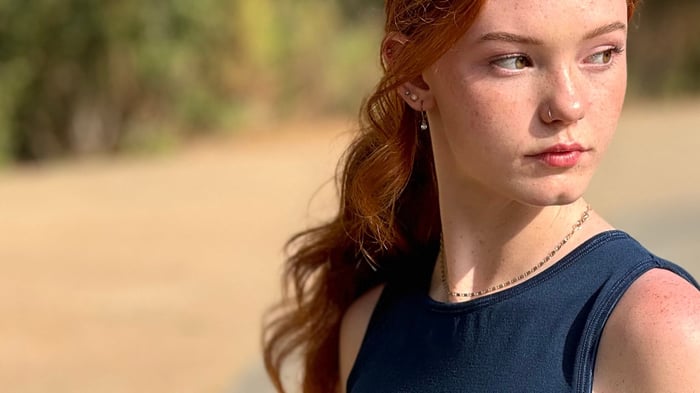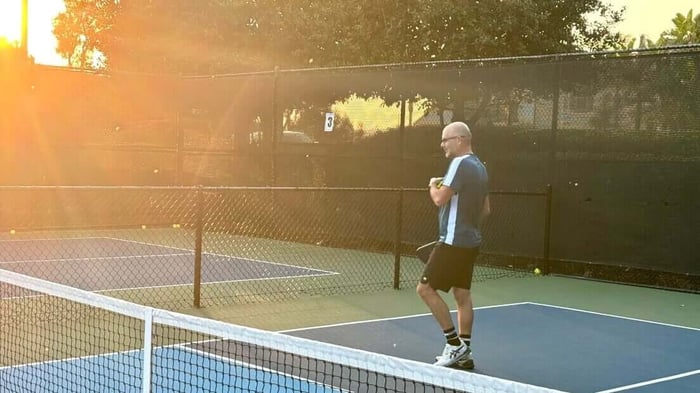Key takeaways:
Incorporating stretches into your pickleball routine can significantly reduce the risk of injuries and enhance your performance on the court.
Dynamic stretches before play and static stretches after can improve flexibility, agility, and muscle strength, contributing to a better pickleball experience.
Small, intentional movements like lunges, shoulder rolls, and wrist stretches can lead to significant gains in control, agility, and endurance on the court.
Pickleball is a fast-paced, full-body sport that demands flexibility, balance, and quick reflexes. A proper stretching routine can help you prepare your body for movement and minimize the risk of injury. This is because stretching increases circulation, activates key muscle groups, and improves mobility on the court. The right combination of stretches can keep you feeling strong, agile, and ready to perform at your best.
Whether warming up for a competitive match or heading into a casual rally, stretching is essential for peak pickleball performance. It sets the tone for how your body responds to every step, swing, and sprint. Investing a few minutes in targeted stretches can make a lasting impact on your game. At PB5star, we design performance-driven gear that moves with you, so you can stretch with purpose and play at your best.
Why stretching is essential for pickleball players
Stretching is the first step toward better performance on the court. It prepares your muscles for movement, boosts circulation, and activates the joints and tissues you rely on during play. With the quick pivots, lunges, and fast changes in direction that pickleball demands, flexibility becomes a key factor in staying sharp. A consistent stretching routine gives your body the responsiveness to play strongly from the first serve to the final point.
Preventing injury is just as important as perfecting your swing. Tight muscles limit range of motion and increase the risk of strains, especially in high-impact areas like your shoulders, hips, and calves. This is why the best stretches for pickleball help reduce tension and improve joint mobility, allowing your body to absorb movement more easily. This foundation of mobility makes your movements smoother and more efficient throughout the game.
Dynamic lunges for flexibility and strength
Lunges are powerful for building lower-body strength, flexibility, and control, three essentials for strong movement on the pickleball court. Each variation targets key muscles while improving balance, stability, and mobility. Here are a few exercises to support dynamic footwork and help you stay agile at every point:
Master the forward lunge: Step one foot forward and lower both knees to a 90-degree bend, then push back to standing.
Practice the lateral lunge: Step out to the side with one foot, bend one knee while keeping the other leg straight, and push your hips back.
Try walking lunges: Step forward into a lunge, then bring the back foot into the next lunge.
Incorporating these lunge variations into your routine builds strength, flexibility, and court-ready movement. Consistent practice makes you feel more stable, responsive, and confident in every step. Minor improvements in control lead to bigger gains in performance.
Hamstring and quadricep stretches for balanced strength
Strong, flexible calves and hamstrings are essential for quick, agile movement on the pickleball court. Static stretches like the wall lean for calves and the standing hamstring stretch are great for improving range of motion. Hold each position for 20–30 seconds and breathe steadily to release tension. These moves support smoother transitions, better recovery, and a reduced chance of injury during demanding play.
Dynamic movements like calf bounce stretches and hamstring sweeps for warm-ups can activate your lower body and prep it for action. Bouncing gently on your toes or sweeping your arms as you hinge forward with one leg extended helps strengthen the muscles and improve coordination. Incorporating static and dynamic stretches into your weekly routine can boost first-step speed, ease post-game soreness, and keep your legs moving freely from the first serve to the final point.
Shoulder stretches to prevent injuries
Shoulders take on a heavy workload in pickleball, from overhead serves to quick volleys and dynamic returns. Without regular care, they’re prone to tightness, fatigue, and overuse injuries that can hold back your performance. Building shoulder mobility into your routine protects your range of motion and helps maintain strength across every type of shot.
Embrace the arm-across-chest stretch: Stand tall, bring one arm across your chest, and hold it with your opposite hand.
Master the shoulder blade squeeze: Whether sitting or standing, concentrate on squeezing your shoulder blades together for 5-10 seconds.
Get playful with arm circles: Stand with your arms out to the sides and rotate in small circles, gradually increasing the size.
Protecting your shoulders means playing smarter and staying in the game longer. These stretches promote mobility and help prevent common injuries caused by overuse or poor mechanics. A few minutes of focused mobility work can keep your serves fluid and your swings pain-free.
Calf stretches for quick sprints
Strong, flexible calves are key for quick sprints, fast recoveries, and sharp changes in direction on the pickleball court. When your calves are tight, you lose push-off power and risk strains. Keeping them loose helps you stay light on your feet and move more efficiently during high-intensity rallies. The wall lean stretch is a great way to target this area. Just face a wall, place your hands on it, step one foot back, and keep your heel down as you lean in.
For a more active warm-up, try calf bounce stretches. Rise onto your toes and gently shake in place, keeping it light and controlled. This movement wakes up your calves and prepares them for quick bursts and changes in pace. Adding static and dynamic stretches into your routine can boost your first-step speed and keep your footwork sharp from start to finish.
Hip flexor stretches for agility
Your hips drive power, speed, and directional control on the pickleball court, making hip flexor mobility essential for agile play. When these muscles are tight, your stride shortens, movement slows, and quick reactions feel limited. Stretching the hip flexors regularly unlocks a fuller range of motion and supports smooth, efficient transitions.
Start with the kneeling hip flexor stretch: Kneel on one knee, stretch the opposite foot forward, and gently shift your weight forward while keeping your spine upright.
Use the standing lunge hold: Step into a forward lunge and hold at the bottom with your back leg extended.
Include hip circles for rotational mobility: Stand tall and draw large circles with your knee, keeping the core stable.
Agile footwork starts with mobile, powerful hips. Hip flexor stretches give your body the space to move quickly, change direction smoothly, and play more efficiently. Consistent flexibility work helps prevent strain, improves endurance, and supports long-lasting movement quality. The more freely your hips move, the more confidently you’ll cover every inch of the court.
Wrist stretches for control and precision
Wrist mobility is significant in paddle control, shot precision, and hand responsiveness during play. Whether you're executing a soft dink or a powerful serve, your wrists help guide the pace and direction of every stroke. These stretches help keep your wrists strong, flexible, and ready to perform accurately through every match.
Master the wrist flexor stretch: Extend one arm in front of you with the palm facing up, then gently pull back on your fingers using the opposite hand.
Strengthen with wrist circles: Hold your arms and slowly rotate your wrists in controlled circles in both directions.
Use a towel or resistance band extensions: Grip a rolled towel or a light band and mimic paddle motions to build strength and flexibility.
Prioritizing wrist flexibility and strength leads to better control, quicker reactions, and greater confidence in every shot. Consistent stretching keeps your hands agile and ready for long rallies and precise plays. Small movements make a significant impact when backed by mobility and control. Keep your wrists game-ready, and your performance will follow.
Triceps stretches for better serves
Your triceps do more than you might think; they’re essential for generating power and control during serves, volleys, and overhead shots. When they’re tight or fatigued, your range of motion can shrink, making your shots feel stiff or forced. A great go-to is the overhead triceps stretch: lift one arm, bend it behind your head, and gently press on the elbow with your other hand. It’s simple but effective, loosening the back of your upper arm while giving your shoulder some space to move.
To warm up dynamically, try the behind-the-head reach. Alternate arms, one reaching up, the other down, working toward a gentle connection behind your back. This encourages coordination between the arms and shoulders. Making these stretches part of your regular prep supports smoother strokes and helps reduce wear and tear over time.
Ankle circles for stability
Ankle stability is the foundation of confident movement on the pickleball court. Every sprint, pivot, and quick stop relies on strong, mobile ankles that can absorb force and respond quickly. Adding ankle circles to your routine is a simple, effective way to build the stability needed for consistent, grounded footwork.
Begin with seated ankle circles: Sit tall, extend one leg, and slowly rotate your ankle in large, controlled circles.
Progress to standing ankle circles: Shift your weight to one leg while slowly rotating the free ankle. This stretch adds a balance challenge, improving coordination and ankle control under body weight.
Incorporate circles into warm-ups or cooldowns: Use ankle circles before drills or matches to prepare the joints and after play to reduce tightness and support recovery.
Ankle circles may seem small, but their impact on balance, injury prevention, and movement efficiency is significant. Building strength and mobility at the ankle joint helps you stay stable through fast footwork and quick transitions. Start with simple circles and let every rotation support your performance from the ground up.
Back stretches for overall mobility
Your back plays a significant role in almost every movement on the pickleball court, from powering rotational shots to keeping you balanced during quick footwork. Regular stretching keeps your back mobile and your posture strong, supporting long-term performance. A simple starting point is the cat-cow stretch, which warms up the spine and eases tension with a gentle flow between arching and rounding your back.
Improving back mobility enhances your shot control and dramatically affects how efficiently you move across the court. A flexible, responsive spine supports better rotation, stronger core engagement, and quicker recovery after tough rallies. It helps your body absorb impact, maintain balance, and reduce unnecessary strain during fast-paced play.
Stretching essentials for stronger play
Stretching is one of the most effective ways to support movement, prevent injury, and unlock better performance on the pickleball court. From warm-ups to cooldowns, the right approach helps you stay agile, resilient, and game-ready. These frequently asked questions break down what you need to know to stretch smarter and play stronger.
How often should I stretch to stay safe on the court?
Consistency is key in your pickleball journey. Aim for daily stretching, even on rest days. Regular stretching improves overall flexibility and builds mobility, making your joints and muscles more resilient to play demands. Consistency is more important than intensity; small efforts done often lead to lasting results.
Which is more effective for pickleball: dynamic or static stretches?
Both have value, but dynamic stretches are best before play to activate the body and prepare for movement. In contrast, static stretches are most useful to aid recovery and maintain flexibility. Think of dynamic stretching as a performance primer and static stretching as a maintenance tool. Together, they keep your muscles responsive, reduce fatigue, and support long-term physical health.
How can stretching boost my agility on the court?
Stretching improves your range of motion so you can move more freely and with greater control during fast-paced rallies. When your joints and muscles are mobile, your reaction time improves, and transitions become smoother. Stretching allows you to stay balanced through sudden shifts in direction or off-center shots.
How can I stretch safely to avoid injury?
Start each stretch gently and focus on controlled movement; never force your body into a painful position. Hold static stretches for 20–30 seconds without bouncing, and use steady breathing to support relaxation and release. During dynamic stretches, keep the motion smooth and avoid rushing through reps. Listen to your body, stay within your range of motion, and prioritize quality over intensity to get the most from every stretch without risking strain.
When it comes to pickleball, stretching isn’t just a bonus; it’s a key part of long-term performance and injury prevention. The more you understand your body’s needs, the better you move, recover, and compete. With a consistent and intentional routine, stretching can help you stay flexible, focused, and confident on the court.
Take your pickleball game to new heights
You've now mastered robust stretches to boost your pickleball performance and enjoyment. A flexible, responsive body is your secret weapon against injuries and the key to dominating the court with agility and confidence. By including these stretches in your daily routine, you're not just participating in pickleball; you're actively shaping your athletic prowess and pushing your limits.
Whether warming up, winding down, or recovering after a long rally, stretching builds a foundation for long-term success. It’s a simple habit that improves your play, feel, and connection with the game. Every stretch is an investment in your movement, mindset, and momentum. At PB5star, we believe that performance starts with preparation. Our gear is designed to support how you move so you can stretch smarter, play stronger, and show up at your best.







